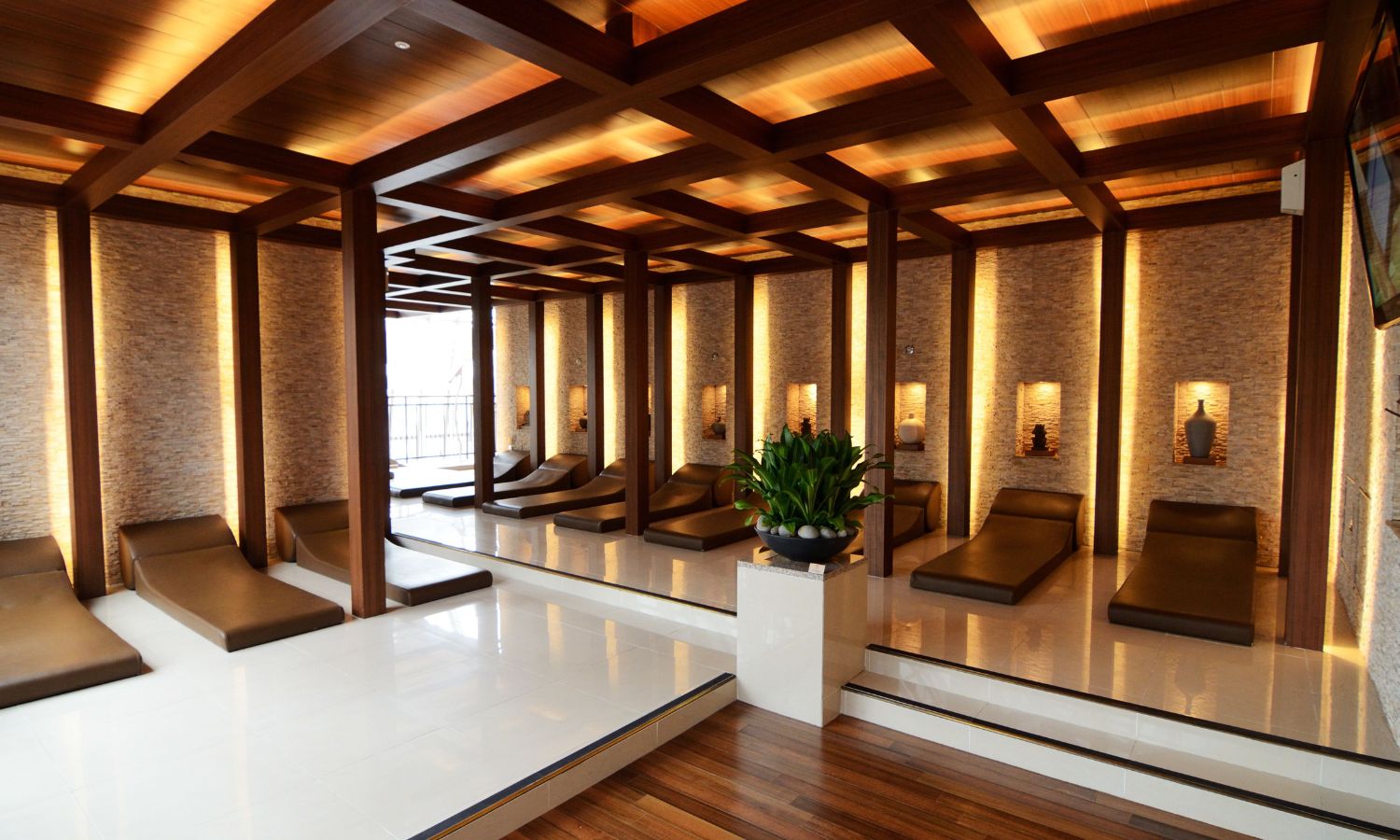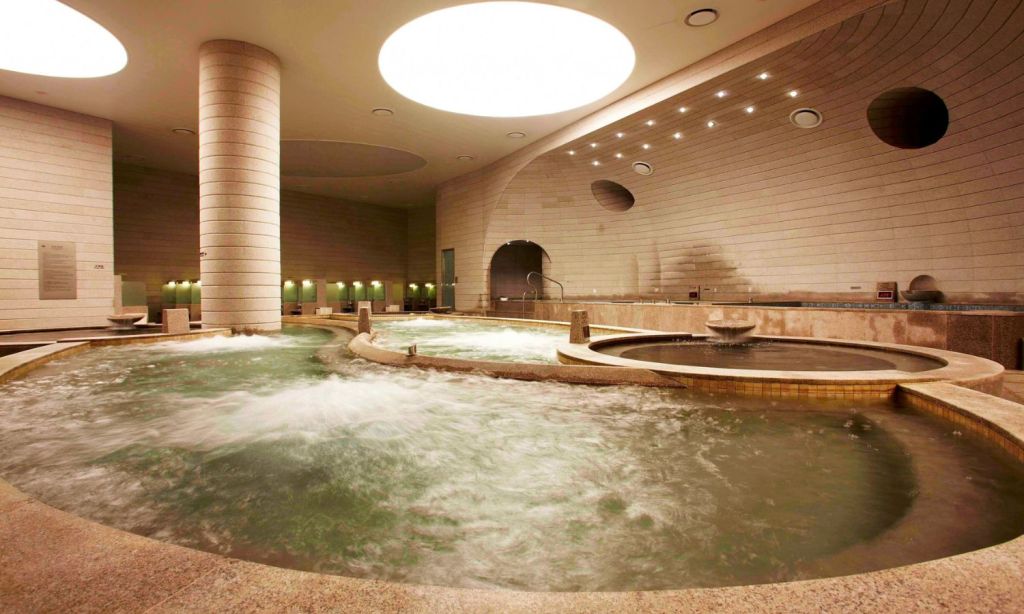Recently, I found myself naked in a hot tub with a handful of other nude women, watching the Korean evening news. I couldn’t understand a word, but I didn’t have anything else to entertain me. I’d had to place my phone in my locker before entering the bathhouse.
I was on Intrepid’s ‘Essential South Korea’ tour, spending a few hours of free time at a bathhouse in Jeonju-Si, a city in the west. Two other tour members had joined me, and we’d used a translator app to buy entry passes and book body scrubs.
“Bathhouses are very important to Koreans because in our past, when indoor plumbing was a luxury, it was a place where people could bathe in hot water,” Yoonie Park, Intrepid’s Head of South Korea Operations, told me later.
Over time bathhouses became more of a social activity where people would chat with their neighbours while getting clean, Park said. As they evolved, they increased the number of services and rest places they provided, including snack bars, game rooms and manicure and pedicure services. Then, they became places where people could also stay overnight.

“For many Koreans, bathhouses are like a second home and a social place to spend time with friends and family,” said Park. “These days, they are even a place to take a date.”
The bathhouse I was in at Jeonju-Si had five baths, with varying temperatures. Surrounding the baths were standing showers with supplied shampoo, conditioner and body wash. The bathhouse also had handheld shower areas with plastic stools so you could sit while you washed.
A group of three older women were chatting away in one of the baths. A mum was playing with her young daughter, pulling her through the water by the arms. I was watching a TV, which hung from the ceiling.
My two fellow tour members were still getting the body scrub, called ‘seshin’, that I had just finished. It had seen me lying naked on a plastic bed in a side area of the bathhouse, rubbed all over by a Korean woman wearing only exfoliation mitts, a bra and high-waisted undies.
Every few minutes, she’d dump a bowl of hot water over me to wash away the dark grey flecks she’d rubbed off me. I’d been prodded to lie on my back and on my side with one leg propped up in front of me so she could access all my crevices. The scrub had finished with her shampooing my hair.
The next day, at the next stop on the tour, Busan, the second-biggest city in Korea, I tried another bathhouse and body scrub (grey flecks still came off). The bathhouse was at Spa Land, a Disneyland for adults into wellness with 22 spas, 13 themed saunas, and an open-air foot spa.
“In Korean bathhouses, people are friendly and are not shy at all,” said Park. “You’ll have a range of youth, adults and the elderly all bathing and chatting in unison. It’s all very social. Be respectful — as if you’re with your friends and grandparents in the same room.”
Ahead is everything else I wish I had known before experiencing a Korean bathhouse.
You’re Given a Wristband Upon Entry
Once you pay the bathhouse entry fee, you’re given a plastic wristband that opens your lockers: one for your shoes, near the entrance, and another for your clothes in a gendered locker room. Most wristbands at bathhouses log all your purchases within the facilities, like food, scrubs and massages.
At Spa Land, I used my wristband to buy a bottle of electrolyte water and a massage. I then scanned my wristband before leaving and paid off its balance.
There Are No Bath Towels
Along with the wristband, you’re also given a bathmat-sized towel at the bathhouse entrance. I saw women roll it up and hold either end to clean themselves in the shower. I also saw women using it to hold their hair up while in the bath. The bathhouse is warm from all the steam and the locker room floors are heated, so you aren’t too cold walking around naked.
Shower Before You Enter
Showering before you step into a bath isn’t recommended – it’s required. Women in the bathhouse will shout at you if you don’t (as happened to me). Conveniently, the bathhouses have all the products you need to get ready, including shampoo, conditioner and body wash. I found hair oil, face serum and body lotion in the locker room. At the first bathhouse, you had to pay cash to use a blow dryer, while at Spa Land, they were free to use.
Tie Up Your Hair
Before you get into any bath, tie your hair up. If you don’t, you’ll quickly be told to or you might get a rubber band thrusted in your hand, as I did. Though the water is regularly sterilised — at Spa Land it’s sterilised 36 times a day — it seems Koreans want it to be as clean as possible so have nothing other than people’s bodies in it.
Treatments Are Separate to Entry
Once you’ve paid the entry fee, you can decide which treatments, if any, you want to get inside. At the first bathhouse, the body scrub was cash-only, while at Spa Land, you could pay it by card with the rest of your balance at the end. At Spa Land, I booked a body scrub and massage combo that lasted 40 minutes. Both treatments took place in a small room off the main bathhouse room, with all the beds in the same room.
Related: Taste the Best of Seoul With Sydney’s Top Korean Restaurants
Related: What’s Behind the Korean Cuisine Boom in Sydney?
Read more stories from The Latch and subscribe to our email newsletter.







